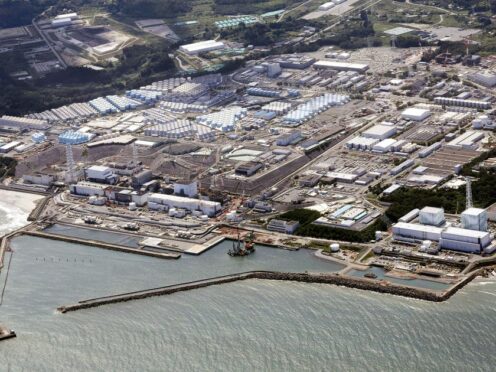
A team of experts from the UN nuclear agency inspected the tsunami-hit Fukushima Daiichi nuclear power plant on Wednesday, for a review of its discharge of treated radioactive wastewater into the Pacific.
The International Atomic Energy Agency inspection was part of a four-day visit to Japan that started on Tuesday, its second since the water discharge began last August, despite strong protests from fishing groups and neighbouring China, which has banned Japanese seafood.
The IAEA team will issue a report later.
The Japanese government and the plant operator, Tokyo Electric Power Company Holdings, or Tepco, say the discharges are diluted to better than international standards, and IAEA chief Rafael Mariano Grossi said in March that they were being carried out safely.
During the site visit on Wednesday, the plant suffered a temporary blackout when some underground digging apparently damaged an electrical cable in an area separate from the water discharge.
The blackout halted the water discharges for several hours, but the IAEA was nonetheless able to complete its inspection, according to Tepco.
One excavation worker suffered burns and had to be treated in hospital, but the plant’s cooling systems were unaffected and the water discharge resumed safely on Wednesday, Tepco said.
A 2011 earthquake and tsunami damaged the Fukushima plant’s power supply and reactor cooling functions, triggering meltdowns of three reactors and causing large amounts of radioactive wastewater to accumulate.
After more than a decade of clean-up work, the plant began discharging the water after treating it and diluting it with seawater on August 24, starting a process that is expected to take decades.
Data and samples collected from the Fukushima plant will be corroborated at IAEA labs and independent third-party labs from China, South Korea, Switzerland and the United States, and will be released in a report later.
“This independent, objective and science-based approach will help build confidence to the people in Japan and beyond,” mission leader Gustavo Caruso, director of safety and security coordination at IAEA, said at a meeting Tuesday with Japanese officials.
The team includes independent international experts from 10 countries – Argentina, Australia, Britain, Canada, China, France, Russia, South Korea, the United States and Vietnam.
Japan’s government and Tepco say the treated water is filtered and diluted by large amounts of seawater.
Results of monitoring of seawater and marine life samples near the plant show concentrations of tritium, the only inseparable radioactive material, are far below recommended limits, they say.
The plant has released about 31,200 tons of the treated water in four batches. The ongoing fifth batch of 7,800-ton release lasts until May 7.

Enjoy the convenience of having The Sunday Post delivered as a digital ePaper straight to your smartphone, tablet or computer.
Subscribe for only £5.49 a month and enjoy all the benefits of the printed paper as a digital replica.
Subscribe